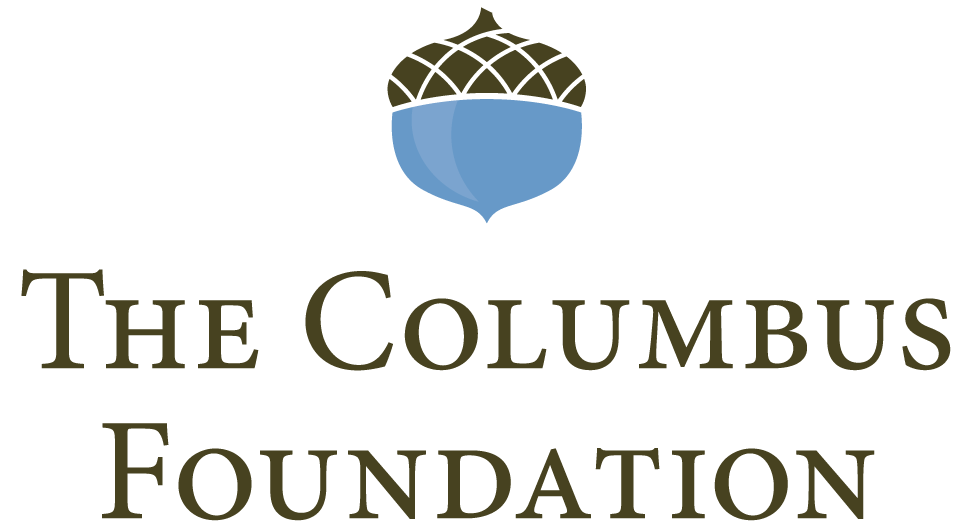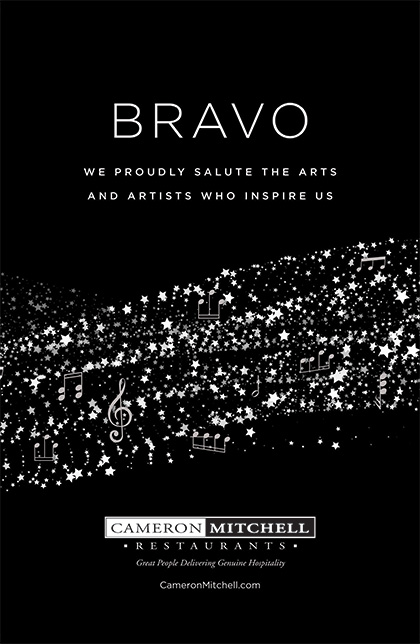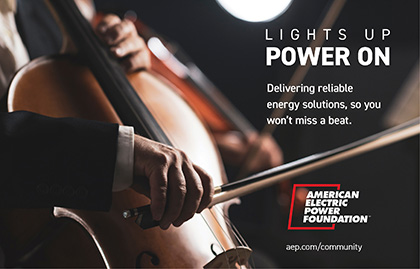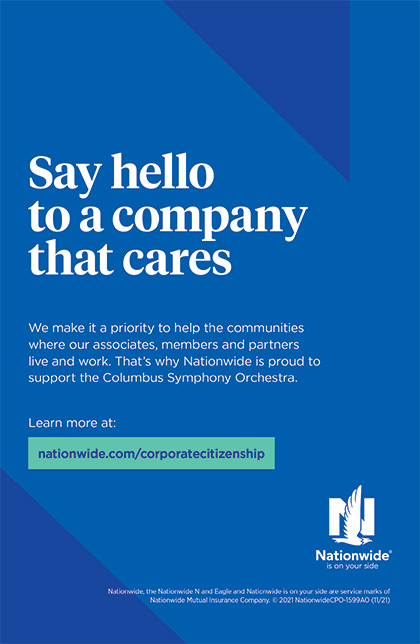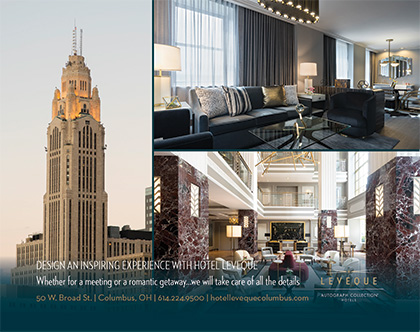
 Dear Columbus Symphony Supporter,
Dear Columbus Symphony Supporter,
Welcome to the 2024-25 Masterworks season! This season is particularly meaningful to me, as it is my 10th anniversary season in Columbus. We have accomplished so much together in the last decade, and I look forward to celebrating with you throughout this year.
We open the season with A John Williams Celebration on September 20 and 22, featuring some of the most popular, recognizable, and critically-acclaimed film scores in modern history.
On October 5, Wagner’s Ring will entrance you with the legendary music of Richard Wagner’s immense operatic Ring cycle, with all four operas re-imagined into one continuous 75-minute performance. Journey through epic tales of mythical gods and heroes in this incredible arrangement, performed without singers.
Next (November 1 and 2), we will perform Modest Mussorgsky’s magnificent Pictures at an Exhibition in two forms: in its original version for solo piano, and in a rarely-heard orchestration by Sergei Gorkachov. Rising star pianist Maxim Lando will perform both the solo Mussorgsky and Tchaikovsky’s beloved Piano Concerto No. 2 in his Columbus Symphony debut.
We will close the 2024 portion of the season on November 15, 16, and 17 with Handel’s Messiah. I hope you will join us to experience the grandeur and tradition of Handel’s exultant masterpiece, featuring the Columbus Symphony Chorus.
On behalf of the entire Columbus Symphony family, thank you for your exceptional support of our orchestra, and for joining us for this very special season.
Please enjoy tonight’s performance!

Rossen Milanov,
Columbus Symphony Music Director
VIOLIN I VIOLA | FLUTE HORN |
The Ring Without Words (1987)
Excerpts from The Ring of the Nibelung (1851-1874) by Richard Wagner (Leipzig, 1813 - Venice, 1883)
arranged by Lorin Maazel (Neuilly-sur-Seine nr. Paris, 1930 - Castleton, VA, 2014)
To many opera lovers, the main attraction of the genre lies in the beauty of the human voice, in conjunction with the stage action and the scenery. In some sense, opera was always a Gesamtkunstwerk, a “global work of art” uniting music, poetry, and the visual arts, yet it was Richard Wagner who first used that term, to emphasize how inseparable those elements were from one another–and also to express how he wished to singlehandedly control all aspects of the production, After all, he wrote both the libretto and the music of his operas (or “music dramas,” as he preferred to call them), and had much to say about the stage directions, sets and costumes, at the festival theater in Bayreuth that King Ludwig II of Bavaria had built specifically for him.
Exactly 150 years have passed since Wagner drew the final double bar at the end of Götterdämmerung (“Twilight of the Gods”), the last installment of his magnum opus, the four-opera cycle The Ring of the Nibelung, which also included the earlier operas Das Rheingold (“The Rhine Gold”), Die Walküre (“The Valkyrie”) and Siegfried. Upon finishing the project that had occupied him for the better part of a quarter-century, he noted in the score: “Completed in Wahnfried [his villa in Bayreuth] on 21 November 1874. I will say no more!! RW.” Yet no matter how much Wagner insisted on his idea of the Gesamtkunstwerk, there is no doubt that, for all the complexity and philosophical depth of the Ring story, it is the music that has made this work the landmark in Western civilization that it is.
Among Wagner’s many extraordinary contributions, his innovations in the handling of the orchestra was one of the most influential. He revolutionized the art of orchestration, and even had a new brass instrument (known as the Wagner tuba) built to his own specifications. The music of the Ring is based on a network of leitmotifs–themes representing certain characters, objects or feelings, heard at the appropriate moments in the operas. These motifs can be sung by the singers, but are almost always played by the orchestra. In fact, it would be only a slight exaggeration to say that the entire story of the Ring is contained in the orchestral parts. And this is where Lorin Maazel came in.
Some excerpts from the Ring had long been favorites at symphonic concerts: the “Ride of the Valkyries” from Die Walküre, the “Forest Murmurs” from Siegfried, or “Siegfried’s Rhine Journey” from Götterdämmerung, among others. Yet the idea of presenting the entire tetralogy in a purely instrumental form, condensing a total of 15 hours of music into just 70 minutes (short enough to fit on a CD), had never been tried until the recording company Telarc approached Maazel with the suggestion.
Lorin Maazel, one of the most celebrated conductors of his generation, was a composer in his own right: his opera 1984, based on the George Orwell classic, had its premiere at Covent Garden in 2005. And of course, Wagner had always figured prominently in Maazel’s enormous conducting repertoire. He had led performances of the entire Ring cycle at Bayreuth in 1968, as the first non-German ever to do so. Thus, he brought both analytical understanding and practical performing experience to the Ring without words project, a challenge he met to universal acclaim. Over the years, many conductors have programmed the arrangement.
Played without pause, Maazel’s “symphonic synthesis” begins the same way the tetralogy itself does: the long, deep E flats symbolizing the creation of the world and depicting the primeval, peaceful state of the world before the action began. At the moment, the gold still lies undisturbed at the bottom of the Rhine, faithfully guarded by the three Rhinemaidens. From there, we move to Valhalla, the abode of Wotan, chief of the gods, high in the clouds, and then follow Wotan as he descends into Nibelheim, the underworld where the Alberich the Nibelung rules over the other dwarfs. Alberich has stolen the gold from the Rhinemaidens and forged a ring which makes him the ruler of the world–until Wotan wrests it from him by force. Back to Valhalla, the god Donner summons a storm to clear the air so that Wotan and the other gods can finally enter their dream castle. The castle was built by two giants, whom Wotan paid with Alberich’s ring. Yet the dwarf put a curse on the gold when he had to give it up, and this curse will haunt all the characters until the very end.
The storm at the end of Rheingold segues directly into the one that opens Die Walküre, the second opera in the cycle. (The two storms are musically connected by the Donner motif.) This time, the storm serves as an introduction to the story of Siegmund and Sieglinde, Wotan’s mortal children, separated at birth and now reunited under the most unusual circumstances. The twins, who have not yet recognized each other, fall in love (here Maazel gave some of Sieglinde’s vocal lines to a solo flute). The ecstatic love scene, however, immediately gives way to the anguished flight of the lovers from Sieglinde’s husband Hunding. The latter catches up with the fugitives and kills Siegmund. Wotan, who originally wanted to protect his son, was prevented from doing so by his wife Fricka, who was outraged about the adultery and the incest. The Valkyrie Brünnhilde, Wotan’s daughter by the earth goddess Erda, tries to follow her father’s true wishes, if not his express orders, and tries, unsuccessfully, to protect Siegmund. The famous “Ride of the Valkyries,” where we meet Brünnhilde’s eight obedient sisters, is followed by Wotan’s pursuit of his rebellious daughter, whom he must punish for her disobedience by putting her to sleep on a rock, surrounded by the magic fire. Siegfried (Siegmund and Sieglinde’s as-yet-unborn son) will be the hero who will awaken Brünnhilde and claim her as his wife; his glorious motif is heard here for the first time. Wotan’s heart-rending farewell to his favorite daughter and the magic fire music mark the end of Die Walküre.
From the opera Siegfried, we hear the music of the young man in the forest and some strains from the part where he welds the pieces of his father’s broken sword together, before finding him dreaming about the mother he never knew. He hears a forest bird singing (a little later, he will understand the bird’s life-changing message), and then heads to the cave where Fafner the dragon lies, guarding the Rhinegold. (In his earlier incarnation, Fafner was one of the giants who built Valhall, and killed his brother Fasolt over the treasure.)
Having awakened Brünnhilde at the end of the opera Siegfried, the hero leaves her on the rock and starts on a journey down the river Rhine. He comes to the palace of the Gibichungs. where he meets King Gunther, Gunther’s sister Gutrune and their half-brother Hagen, who is the son of Alberich and who plots Siegfried’s murder. The Rhinemaidens, still grieving for their lost gold, plead with Siegfried to return their treasure and at the same time warn him of impending danger–all to no avail. Hagen kills Siegfried, whose funeral procession, with music recounting the hero’s life through a succession of leitmotivs, is one of the great orchestral numbers in the tetralogy. Brünnhilde then restores the world order by returning the ring to the river; she also immolates herself in the universal conflagration that ends the rule of the gods. The respective motifs of fire and water are united to the motif of universal redemption. In the end, the power of love emerges victorious over greed and the lust for domination. The concluding chords of the Ring leave us with the feeling that the world is finally at peace, and after an entire age of strife, there is hope for a new dawn.


